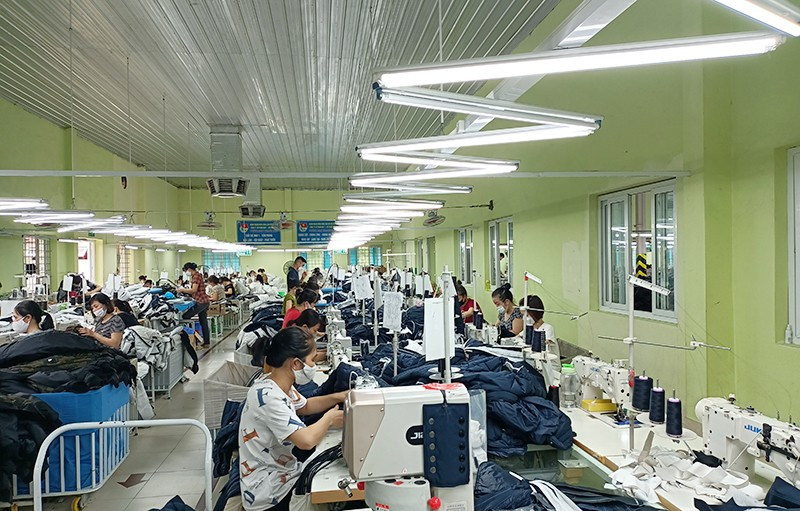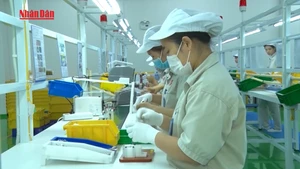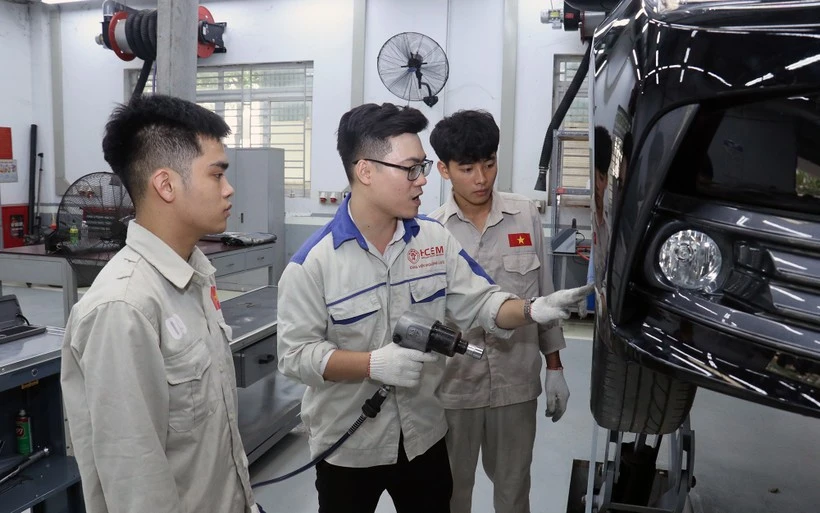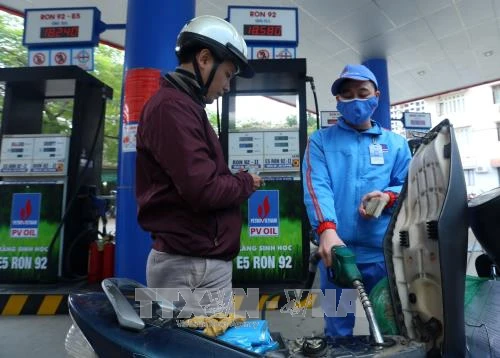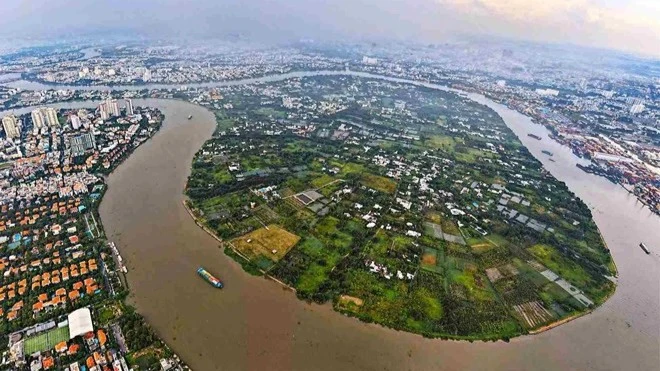Businesses are facing a shortage of orders and price pressure. Many businesses have to accept smaller orders, contrary to their forte to maintain production and ensure jobs for workers.
To overcome difficulties, there is no other way, businesses need to maintain stamina, and flexibly deal with new requirements quickly, to "catch new waves" of the market.
Continuing to prolong the low-demand situation
According to the Chief Office of the Board of Directors of the Vietnam National Textile and Garment Group (Vinatex) Vuong Duc Anh, the total export revenue of Vietnam's textiles and garments in the past seven months reached 22.5 billion USD, down 15.9% compared to the same period last year. In July alone, the industry's export revenue reached 3.81 billion USD, down 9.4% over the same period and up 6.2% compared to June 2023.
In the past seven months, only the Japanese market maintained a 3% increase, with export turnover reaching 2.23 billion USD; the US, EU and the Republic of Korea markets decreased by 24%, 10% and 7.7% respectively over the same period. Particularly for the Chinese market, although July had good growth, export turnover reached 360 million USD, up 35%, but over seven months still decreased by 10% compared to the same period in 2022.
The difficulties that Vietnam's textile and garment industry is facing have been forecasted very early, especially in the last months of 2022, when the market reversed downward, causing businesses to fall into a difficult situation due to the market. The yarn was almost non-liquid, the garment market's orders dropped sharply, and the news of continuous losses had "blown away" all the profits gained in the previous months.
Entering 2023, the world economy is forecasted to grow at a lower rate than in 2022, due to tight monetary policy and geopolitical conflicts. Slow economic growth leading to the trend of continued tightening of consumer spending is the reason why purchasing power in major markets such as the US and EU has dropped sharply.
Commenting on the market in the coming time, Anh said that the low demand situation of the garment industry may last until 2024. Because the current demand has not shown an increase, the total demand may only increase naturally due to year-end festivals.
For the US market, garment imports are expected to increase by 10% in the coming months, bringing the import turnover of this market to $80 billion for the whole year, down 20% compared to 2022. And the Japanese market continues. The uptrend of the past seven months, however, may be affected by a 5-7% decrease in the price as the yen continues to depreciate, according to JP Morgan's forecast.
The cotton-fibre market is forecasted to increase slightly in the last months of the year, fluctuating around 82-88 cents/lb, equivalent to 2.1-2.3 USD/kg. Polyester fibre can fluctuate slightly with the oil price, ranging from 1- 1.05 USD/kg, with oil price forecast at 80-90 USD/barrel.
The fiber market in the third quarter of 2023 is still at a low level, equivalent to the second quarter; In the fourth quarter, yarn demand and prices will improve slightly based on input cotton and fiber prices, so yarn businesses can reduce their losses when high cotton prices are used up, as yarn prices will seldom change.
Sharing about the business's operations, the General Director of Viet Thang Corporation, Nguyen Quang Minh, said that in the face of a prolonged difficult market situation, this year the unit set a target of 1,200 billion VND in revenue and profit, before tax of 35 billion to 50 billion VND, with the average income of workers at 11 million VND/person/month.
To complete the goal, the unit continued to offer comprehensive solutions to maintain stable production and business, promote the search for new customers, and new suppliers, and maintain and develop old customers. At the same time, increase in-depth investment in equipment to improve quality, output and qualifications; automation in production lines, improving the working environment for workers, improving production and business efficiency, and meeting the increasing and diverse needs of customers.
Satisfying customer needs
Unlike the COVID-19 epidemic period, when difficulties lay in the ability to stabilise labour and organize production, currently, obstacles for textile and garment enterprises come from all sides, such as difficulties in resources and finance, competition increasing, and purchasing power decreasing.
In particular, the world textile supply chain is gradually stabilising in a "new normal", highlighted by market demand characteristics at a new equilibrium level, low trend; processing prices continue to stay low; small orders, strict technical and product quality requirements, fast delivery time; the trend of using green materials, recycled materials.
General Director of Vinatex Cao Huu Hieu affirmed, that to be successful, businesses must flexibly regulate according to market and customer needs. In the current period, the group is focusing on key solutions such as forming and promoting the activities of yarn-clothing-garment-household production and trading departments, to take advantage of the experience of the customers.
Good units support weak units to improve operations and production efficiency. In addition, strengthening the function of coordination and connection between production and business departments to quickly form a production chain, as well as build a centre for product development and fashion sales of the group.
It is necessary to consider the digitalisation of management as the focus to optimise production resources, increase productivity and ensure product quality; continue to do well in market work and improve forecasting ability on the textile market; at the same time, develop service centres, shared management solutions between units in the same area to make the most of all resources, avoid waste and spread; focus on researching green production technology solutions; and develop new products using green materials, recycled materials.
The current context has changed a lot when the comments all show that the difficulties will last, even long enough to screen and remove those businesses that are not competitive or flexible enough. More than ever, businesses need to be very alert, and flexible but decisive, and prepare resources to accept the "new normal" of the market.
Vinatex, with its corporate model of many member units, needs to focus on solutions to maximise its overall strength and restructure to respond more flexibly to market trends, considering it a prerequisite to continue to develop and improve its position in the global textile supply chain.
Chairman of the Board of Directors of Vinatex, Le Tien Truong, said that the market in the last months of the year has not shown any signs of improvement, but the worst for the textile and garment industry has passed. Therefore, enterprises need to be proactive in resources and finance, strengthen governance as well as minimise costs, etc., to improve competitiveness and be ready to catch new waves of the market.
